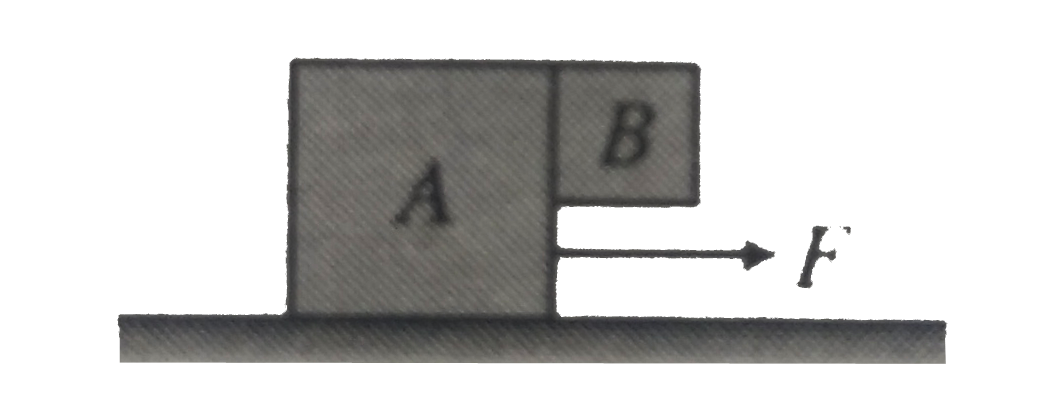Newton's third law :
defines the force qualitatively
defines the force quantitatively
explains the way a force acts on a body
gives the direction of force.
The correct Answer is:C
To answer the question regarding Newton's third law, we will analyze the options provided and determine which one correctly relates to the law.
1. Understanding Newton's Third Law:
- Newton's third law states that for every action, there is an equal and opposite reaction. This means that if one body exerts a force on another body, the second body exerts a force of equal magnitude but in the opposite direction on the first body.
2. Analyzing the Options:
- Option 1: Define the force qualitatively.
- This option is incorrect because defining force qualitatively relates more to Newton's first law, which describes the concept of force in terms of motion and rest.
- Option 2: Define the force quantitatively.
- This option is also incorrect as it pertains to Newton's second law, which quantitatively defines force as the product of mass and acceleration (F = ma).
- Option 3: Explain the way a force acts on a body.
- This option is correct because it aligns with Newton's third law. It explains how forces interact between two bodies, emphasizing that when one body exerts a force on another, the second body exerts an equal and opposite force back on the first body.
- Option 4: Give the direction of force.
- This option is partially correct but does not fully encapsulate the essence of Newton's third law, which is more about the interaction and the relationship between the forces rather than just their direction.
3. Conclusion:
- The correct answer is Option 3: Explain the way a force acts on a body, as it directly relates to the principle of action and reaction described by Newton's third law.
- Newton's third law states that for every action, there is an equal and opposite reaction. This means that if one body exerts a force on another body, the second body exerts a force of equal magnitude but in the opposite direction on the first body.
- Option 1: Define the force qualitatively.
- This option is incorrect because defining force qualitatively relates more to Newton's first law, which describes the concept of force in terms of motion and rest.
- Option 2: Define the force quantitatively.
- This option is also incorrect as it pertains to Newton's second law, which quantitatively defines force as the product of mass and acceleration (F = ma).
- Option 3: Explain the way a force acts on a body.
- This option is correct because it aligns with Newton's third law. It explains how forces interact between two bodies, emphasizing that when one body exerts a force on another, the second body exerts an equal and opposite force back on the first body.
- Option 4: Give the direction of force.
- This option is partially correct but does not fully encapsulate the essence of Newton's third law, which is more about the interaction and the relationship between the forces rather than just their direction.
- The correct answer is Option 3: Explain the way a force acts on a body, as it directly relates to the principle of action and reaction described by Newton's third law.
Topper's Solved these Questions
- LAWS OF MOTIONBOOK - ICSECHAPTER - LAWS OF MOTIONEXERCISE - EXERCISE - 3(D) (Numerical)
3 Videos
- LAWS OF MOTIONBOOK - ICSECHAPTER - LAWS OF MOTIONEXERCISE - EXERCISE - 3(E)
23 Videos
- LAWS OF MOTIONBOOK - ICSECHAPTER - LAWS OF MOTIONEXERCISE - EXERCISE - 3(D)
17 Videos
- ICSE ANNUAL EXAMINATION -2020BOOK - ICSECHAPTER - ICSE ANNUAL EXAMINATION -2020EXERCISE - SECTION-II
45 Videos
- LIGHTBOOK - ICSECHAPTER - LIGHTEXERCISE - TOPIC 2 Spherical Mirrors (4 Marks Questions )
9 Videos
Similar Questions
In case of rocket propulsion, choose the correct options. a) momentum of rocket always remains constant. b) Newton's third law is applied. c) If exhaust velocity and rate of burning of mass is kept constant, then acceleration of rocket will go on increasing. d) If exhaust velocity and rate of burning of mass is kept constant, then thrust force will be constant.
View SolutionStatement I: Block A is moving on the horizontal surface towards right under action of force F. All surfaces are smooth. At the instant shown the force exerted by block A on block B is equal to net force on block B.

Statement II: From Newton's third law, the force exerted by block A on B is equal in magnitude to force exerted by block B on A.
View Solution
Knowledge Check
Newton's second law of motion is
AF=dpdtBF=mvCF=mv2DF=m2vThe correct form of Newton's second law is :
AF=ΔpΔtBF=mΔvΔtCF=vΔmΔtDF=mv
State Newton's third law of motion.
View SolutionNewton's first law is applicable
View SolutionState and explain the law of inertia (or Newton's first law of motion).
View SolutionAssertion :− Newton's first law defines inertial frame of reference.
Reason :− Newton's laws can be applied only in inertial frames of reference.
View SolutionAssertion: Newton's first law can be derived from the second law.
Reason: Action and reaction act on the same body.
View SolutionGive qualitative definition of force on the basis of Newton's first law of motion.
View Solution
